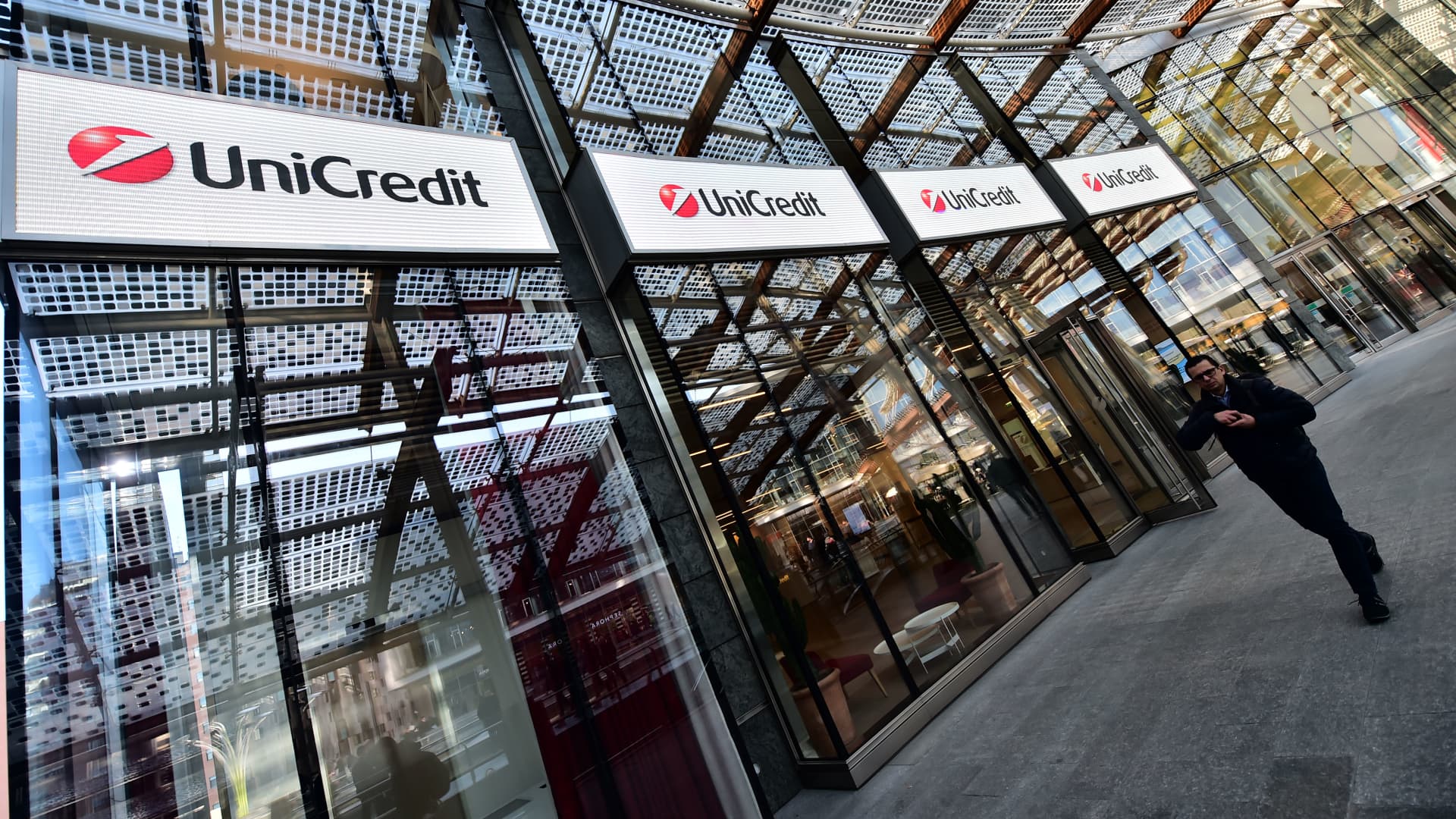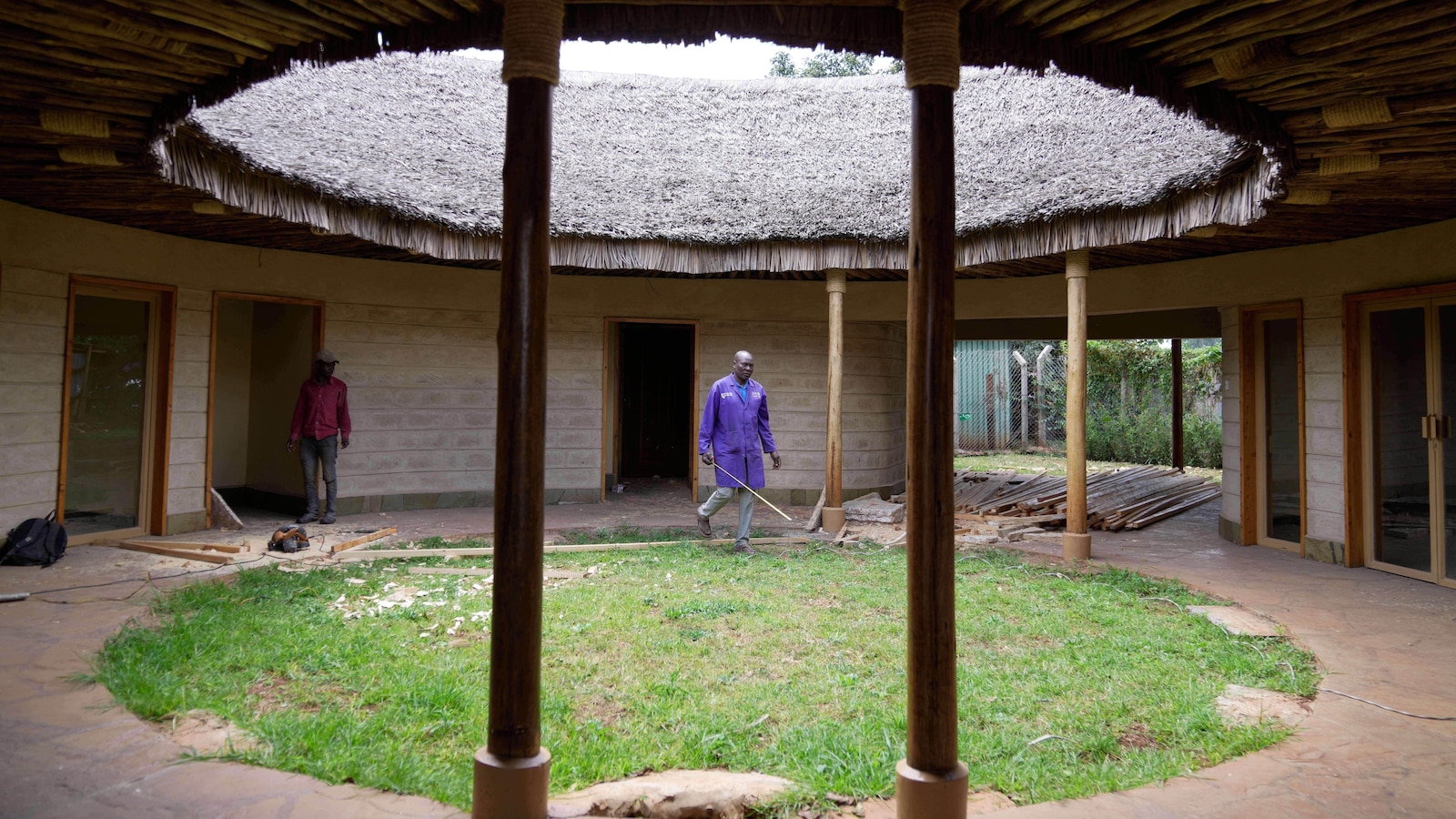Google’s new AI tool can read DNA like a language, and see immediately if a word substitution will change the meaning of that sentence, the company says. — © AFP HO
British scientists have used advanced genetic and genomic techniques to…

Google’s new AI tool can read DNA like a language, and see immediately if a word substitution will change the meaning of that sentence, the company says. — © AFP HO
British scientists have used advanced genetic and genomic techniques to…

Europe’s banks take center stage this week as earnings season gets underway, but with heavy losses across the sector on Friday, credit concerns appear to be making their way across the Atlantic at a particularly tricky time for the region’s lenders.
Credit concerns hit European banks
Last week, the biggest names in American finance battled it out to make the most alarming quote of the week. The contenders: JPMorgan CEO Jamie Dimon, Citi Group CEO Jane Fraser and Apollo boss Marc Rowan.
Dimon started the week with a stark warning about the private credit market, saying “when you see one cockroach, there’s probably more.”
Fraser was up next, warning of “pockets of valuation frothiness.” While Rowan was more explicit, suggesting that “there’s been a willingness to cut corners,” in a recent appearance with the Financial Times.
With the sirens sounding stateside, what does this mean for Europe, and how will the continents’ bankers narrate their concerns as earnings season kicks off in earnest next week?
iNueng | iStock | Getty Images
European earnings season kicks off
Unicredit, Barclays, Lloyds Banking Group and Natwest will lead the financial names reporting in Europe and the U.K.
Head of Financials for Credit at Federated Hermes, Filippo Alloatti, told CNBC that he expects CEOs to “shift from macro to micro risk” as a focus in their earnings calls this week, amid concerns around the private credit markets. Meanwhile, Johann Scholtz from Morningstar told CNBC that while he does not see a material deterioration of credit quality appearing in third-quarter results, “it will be interesting how candid management teams will be when discussing the future evolution of credit quality.”
Scholtz highlighted concerns about corporate and small-to-medium sized company loan books, saying “the market is underestimating the impact that (trade) tariffs could have on certain pockets of European banks’ lending books.”
On Friday, bank stocks across Europe sold off sharply as credit concerns drove big declines for the likes of Deutsche Bank, Société Générale, UBS and its peers across the sector.
Margin of error
CNBC’s Silvia Amaro will speak to Unicredit CEO Andrea Orcel as the bank publishes its latest set of earnings, with S&P Global predicting a subdued third quarter amid narrowing net interest margins and higher funding costs.
The Italian lender is continuing it’s M&A ambitions, increasing its stake in Greece’s Alpha Bank to 26%, with Orcel saying “we are grateful to the Greek government, the central bank and other Greek institutions for welcoming us and encouraging our investment.” The reception to Unicredit’s expansion plans in Germany remains cooler.
The UniCredit SpA headquarters in Milan, Italy, on Jan. 22, 2022.
Bloomberg | Getty Images
Car trouble
British lender Lloyds Bank will also report next week, having just announced a new £1.95 billion hit to its balance sheet following a regulatory ruling over the mis-selling of car finance loans. The Financial Conduct Authority estimates the scandal will cost U.K. lenders up to £11 billion. IG predicts this charge will offset what would have been a strong quarter for the bank, as unlike some of it European rivals, net interest income continues to rise.
Lloyds Banking Group said it was stopping people buying cryptocurrencies using credit cards.
Simon Dawson | Bloomberg | Getty Images
Monday: China GDP data
Tuesday: L’Oreal, Coca Cola, Netflix earnings
Wednesday: U.K. inflation data, Unicredit, Barclays, Tesla earnings
Thursday: Unilever, Lloyds Banking Group, SAP, Intel earnings
Friday: France, Germany, U.K. PMI data, Natwest, Procter & Gamble earnings

Researchers at Huntsman Cancer Institute at the University of Utah (the U) have discovered that triple-negative breast cancer relies heavily on lipids for growth. These fatty acids, a defining feature of obesity, appear to drive tumor…

Harriet HeywoodCambridgeshire
 Cambridgeshire Fire and Rescue Service
Cambridgeshire Fire and Rescue ServiceA firefighter diagnosed with an aggressive brain…

The endless march of computer game…

A large-scale investigation has found that people who regularly consume both sugar-sweetened beverages (SSBs) and low- or no-sugar-sweetened beverages (LNSSBs) face a significantly greater likelihood of developing metabolic dysfunction-associated…

A large-scale investigation has found that people who regularly consume both sugar-sweetened beverages (SSBs) and low- or no-sugar-sweetened beverages (LNSSBs) face a significantly greater likelihood of developing metabolic dysfunction-associated…

NAIROBI, Kenya — NAIROBI, Kenya (AP) — A large mushroom farm near the Kenyan capital of Nairobi is one of a kind: It grows fungi on an industrial scale — not as food for restaurants but as a building material that some Kenyans say could make more people homeowners.
The farm produces mycelium, the root structure of mushrooms that a local company then uses to make building materials it says are more sustainable than regular brick and mortar.
The company, MycoTile, combines the roots with natural fibers and agents to make panels that can be used for everything from roof and wall insulation to interior decor, at a fraction of the cost of building with standard clay bricks. It currently produces about 3,000 square meters (yards) of such materials every month.
Street vendor Jedidah Murugi, whose house was made with fungi-based construction materials, said she believes “there is no huge difference in the quality of the houses made from brick and these boards.”
“The only difference,” she said, is in the cost. Her house, she added, “is not cold at night and neither is it hot during the day.”
MycoTile’s work could be a boon for Nairobi, where local leaders cite a housing crisis that has left many homeless or living in informal settlements and dwelling enclaves, prone to fires and sanitary issues. Official figures say there is a housing deficit of at least 2 million units in this metropolis of over 5 million people.
Most Kenyans are renters and those who are homeowners build from the ground up over many years instead of hiring contractors. It is common to find people living in badly finished or incomplete homes to avoid paying rent elsewhere.
“Introducing affordable materials like ours taps into an existing huge market and contributes to providing affordable housing solutions,” said Mtamu Kililo, MycoTile’s founder.
Kililo said his company’s insulation products cost roughly two-thirds of the price of standard materials.
Building a one-bedroom unit in Nairobi using materials such as brick, timber and tin sheets typically costs up to 150,000 Kenyan shillings (about $1,000), for a simple structure, and the figure can double depending on the quality of finishes, according to estimates from builders.
Using mushroom-root panels could shave off a third of the cost of building a house with bricks and mortar. Murugi, the street vendor, spent about 26,880 Kenyan shillings ($208) on the panels for her 15 square meter (161 square feet) home.
Kenyan authorities have recently started working on a national plan for decarbonizing construction and building, with local-led innovation at its center.
As part of the plan, the government allows MycoTile to use facilities at the Kenya Industrial Research and Development Institute in Nairobi, where it has access to machinery.
MycoTile’s fungi-based construction panels are more sustainable than traditional ones because they are biodegradable and harmless to the environment, Kililo told The Associated Press.
His idea was not novel — others elsewhere have experimented with mycelium. The first mycelium house in the southern African nation of Namibia was built by the nonprofit group MycoHAB in May 2024, using technology developed for NASA.
In the Netherlands, one inventor makes mushroom coffins by binding mycelium with hemp fiber in a special mold that ends up resembling an unpainted sarcophagus from ancient Egypt.
Sustainable products from biogenic materials are desirable because they have a low carbon footprint and potentially contribute no emissions, Nickson Otieno, an architect and sustainability expert in Nairobi, said.
Construction “is one of the major emitters,” he added.
The Global Buildings Performance Network, a think tank, earlier this year warned that Kenya “risks locking in decades of carbon-intensive construction” without targeted intervention.
Kililo said his company also uses agricultural waste in its production process, reducing potential pollutants and easing pressure on waste disposal systems.
“We go to western Kenya where there are many sugar manufacturing factories and collect the waste matter,” he said.
The pasteurized agricultural waste is introduced to the mycelium composite from the farmed mushrooms, binding it into dense panels. MycoTile uses up around 250 tons of agricultural waste annually, Kililo said.
For Kililo, the idea came during a research fellowship in the Rwandan capital of Kigali, home to one of the largest mushroom farms in east Africa. Kililo said he learned the process of mushroom farming there.
“The used substrates looked like brick and I thought I could use those in the building industry,” he said.
Returning to Kenya, he decided to create small blocks in his kitchen as part of his research into the fungal basis of sustainable building — never imagining it could someday become commercial.
“I started doing a similar process, growing them in my pantry, baking them in my oven,” he said. “Initially it was purely research.”
___
The Associated Press’ climate and environmental coverage receives financial support from multiple private foundations. AP is solely responsible for all content. Find AP’s standards for working with philanthropies, a list of supporters and funded coverage areas at AP.org.

They offer a glimpse into the material that predated the massive impact that shaped our modern world.
The findings were published Tuesday in Nature Geosciences, according to ScienceDaily.
“This is maybe the first direct…